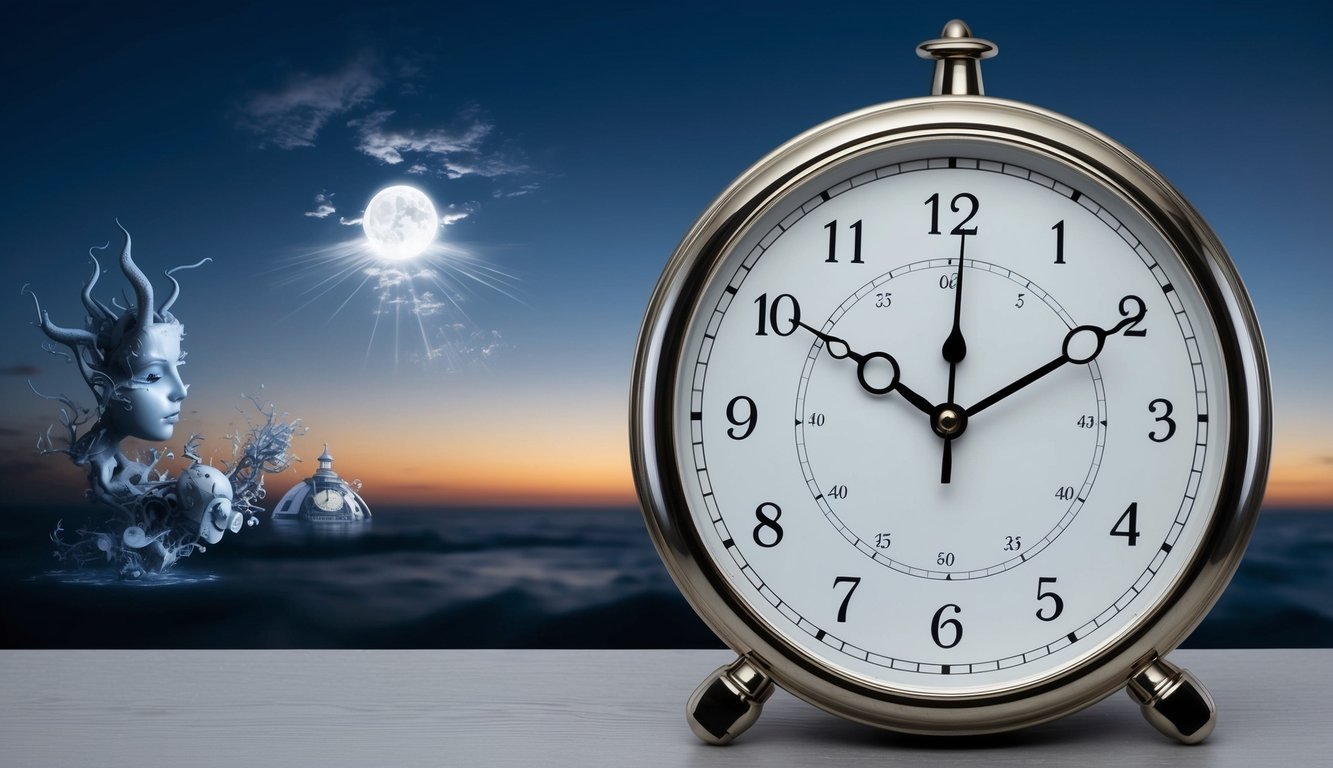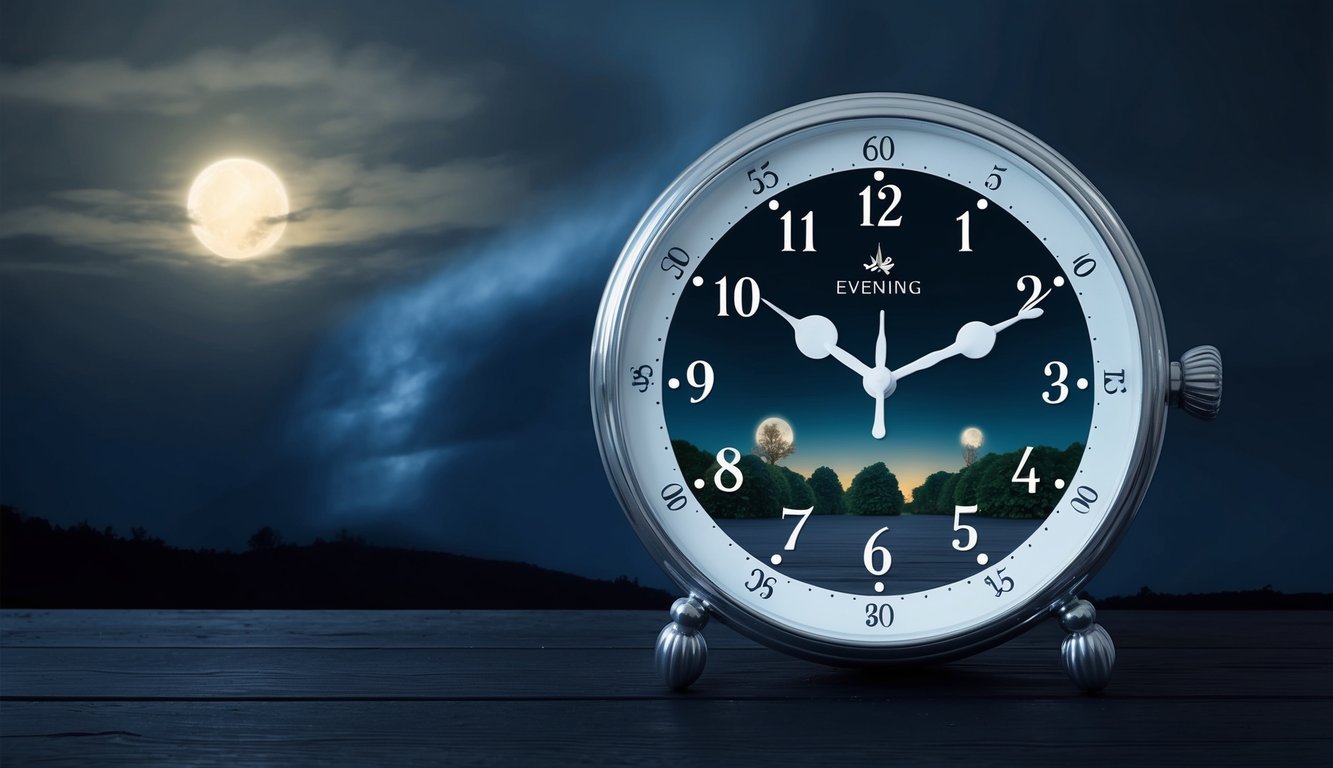PsychNewsDaily Publishers
100 Summit Drive
Burlington, MA, 01803
Telephone: (320) 349-2484
PsychNewsDaily Publishers
100 Summit Drive
Burlington, MA, 01803
Telephone: (320) 349-2484
Dreams become increasingly bizarre as the night progresses, with REM sleep facilitating vivid and fragmented experiences influenced by emotional states and cognitive processes.

As nighttime sets in, many people find that their dreams become increasingly strange and unusual. Recent studies show that dreams can become more bizarre as the night goes on.
This means that the later one sleeps, the more likely they are to experience vivid and odd dream scenarios.
During the first few hours of sleep, dreams tend to be more straightforward and less intense. However, as sleep cycles progress into the night, the mind can explore deeper levels of consciousness, leading to dreams that are not only more vivid but also more fragmented and metaphorical.
Researchers suggest that this pattern may be connected to the brain’s increased activity during these stages.
Understanding why dreams become weirder can help people make sense of their nighttime experiences. Whether these dreams carry emotional weight or simply reflect everyday thoughts, they provide a fascinating glimpse into the mind’s workings.

Sleep consists of different stages that play significant roles in dreaming and brain activity. Understanding these stages helps in grasping how dreams change throughout the night.
Rapid Eye Movement (REM) sleep is crucial for dreaming. During REM, brain activity increases, resembling that of wakefulness. This stage is where most vivid dreams occur.
In REM sleep, the body is relaxed, but the brain is highly active. A person may experience intense emotions and bizarre dream scenarios. The first REM period is usually short but gets longer with each cycle through the night. Here’s how it typically breaks down:
Dreams can become more complex and strange during these longer REM phases.
Sleep consists of multiple cycles, each lasting around 90 minutes. Each cycle includes various stages of Non-Rapid Eye Movement (NREM) sleep followed by REM sleep.
In the beginning, people usually experience more deep NREM sleep, which is important for physical restoration. As night progresses, they spend less time in deep sleep and more in REM sleep.
This change affects dreams, making them more vivid and odd later in the night. Studies show that dreams can become increasingly bizarre as brain activity shifts. For instance, early dreams may be simpler, while later dreams may involve more creativity and strangeness.

Dreams are deeply affected by psychological factors like stress and emotions. These elements shape what dreams are about and how vivid they become. Understanding these connections can help people recognize patterns in their own dreams.
Stress and anxiety are known to influence dream content. When someone is stressed, their mind processes those feelings during sleep. This often leads to more vivid and sometimes chaotic dreams.
People under stress may experience nightmares more frequently. These dreams can reflect feelings of being overwhelmed or threatened. Stress can also disrupt sleep cycles, leading to an increase in REM sleep, where most intense dreams occur.
Strategies like mindfulness and relaxation techniques can help reduce these feelings. By managing stress better, individuals might experience calmer dreams and less frequent nightmares.
Emotions play a key role in dream experiences. Dreams often mirror the emotions felt during the day. When negative feelings are strong, they can contribute to darker or more frightening dreams.
Nightmares frequently arise from unresolved emotions. Fear, sadness, or frustration can manifest in a dream’s narrative, reflecting inner turmoil. For some, these dreams serve as a way to process their feelings.
Being aware of this connection can help individuals address their emotions. Keeping a dream journal can also provide insights into emotional patterns over time, aiding personal growth.

Dreams are influenced by the interaction between various brain systems. The main areas involved are the hippocampus, neocortex, and the dopaminergic system. Each plays a crucial role in how dreams are formed and experienced. Understanding these aspects can shed light on why dreams feel so vivid or strange.
The hippocampus and neocortex work together during sleep to process memories. The hippocampus helps encode and retrieve memories while the neocortex stores them long-term. During REM sleep, when most vivid dreams occur, these areas become highly active.
This interaction is essential for forming dreams related to past experiences. As the night progresses, dreams tend to become more bizarre. This could be linked to how the brain blends different memories and experiences during dream processing.
Dreams play a vital role in memory consolidation. As people sleep, their brains organize and integrate information from the day. In non-REM sleep, memories are transformed and stored in the neocortex.
More unusual dreams often arise from the blending of these memories. For instance, a student’s dream might mix class material with personal experiences. This process may help strengthen understanding and recall, making the dreams feel more meaningful and innovative while also contributing to learning.
The dopaminergic system is linked to feelings of pleasure and motivation. It also influences how vivid dreams can feel.
Higher levels of dopamine during REM sleep contribute to more intense emotional experiences in dreams. When dopamine is active, it may enhance creativity and lead to more unusual dream scenarios.
This can explain why dreams later in the night often seem stranger than those early on. The involvement of this system highlights how brain chemistry affects dreaming experiences.

Dream content analysis focuses on the themes, emotions, and structure of dreams. Researchers use various methods to explore how dreams can reveal insights about human feelings and cognitive processes.
Researchers often use qualitative and quantitative methods for dream analysis. In a dream lab, participants may recall dreams shortly after waking. This is done through structured interviews or surveys.
Dream reports are collected and coded based on specific categories, such as themes, settings, and characters. The analysis can reveal patterns in dreaming behavior and how these patterns change over time or with different experiences.
Empirical studies show that dream reports can provide valuable information about a person’s emotional state. For example, it is observed that individuals under stress often report dreams with negative emotions or themes.
These findings help in understanding the link between daily life and dream content. The studies indicate that the themes present in dreams might reflect the concerns or problems a person is facing while awake.
Bizarreness in dreams refers to elements that are strange or illogical. Research indicates that as the night progresses, dreams tend to become more bizarre.
This phenomenon is thought to relate to the brain’s emotional areas. During REM sleep, emotions are heightened, which may lead to unusual dream scenarios. Studies suggest that this emotional brain activity influences the content and creativity of dreams, making them more vivid and surreal as sleep continues.

Lucid dreaming is a fascinating state where individuals become aware that they are dreaming. This awareness can offer unique experiences, such as dream control and vivid imagery. Understanding how to achieve lucid dreams and their significance can enrich one’s dream experience.
Lucid dreams occur mostly during REM sleep. During this stage, brain activity resembles that of being awake.
To achieve a lucid dream, an individual can practice specific techniques. Some common methods include:
With practice, these techniques can increase the likelihood of experiencing lucid dreams.
Awareness during dreams offers various benefits. When someone realizes they are dreaming, they can explore their imaginations freely. This can lead to creative problem-solving and self-discovery.
Lucid dreaming can also help in overcoming nightmares. By recognizing that a dream is not real, individuals can change the narrative and reduce fear.
Studies suggest that incorporating lucid dreaming may improve mental health. For some, it helps alleviate anxiety and stress by providing a safe space to face fears. The experience of lucid dreaming opens new avenues for psychological exploration.

Many people have questions about their dreams and sleep patterns. Here are some common inquiries about the relationship between sleep quality, dream frequency, and how these factors affect daily life.
The quality of sleep is influenced by several factors. Sleep stages, including REM sleep, are where most dreams occur. Good quality sleep usually involves a balance of light, deep, and REM sleep. Disruptions can lead to poorer sleep quality, affecting dream recall and frequency.
Dream frequency can change due to various reasons. Stress, changes in sleep patterns, or medication can increase how often a person dreams. Additionally, spending more time in REM sleep, often seen in later sleep cycles, can lead to more frequent dreaming.
Feeling tired after vivid dreaming is not uncommon. Intense dreams can disrupt sleep cycles, leading to a feeling of fatigue. This happens when dreams are particularly stressful or vivid, making the brain work harder during sleep.
Yes, dreaming can indicate the depth of sleep. Most dreams occur during REM sleep, which is a lighter stage compared to deep sleep. If a person is dreaming often, it might suggest they are entering REM sleep more frequently.
Various factors can lead to vivid dreams. Stress, anxiety, and certain medications are common triggers. Also, changes in sleep patterns, such as sleep deprivation or oversleeping, can enhance the intensity and clarity of dreams.
Dreaming plays a role in processing emotions and consolidating memories. It can also help with problem-solving and creativity. Good sleep, including dreaming, supports cognitive function. This function is essential for daily activities and overall mental health.